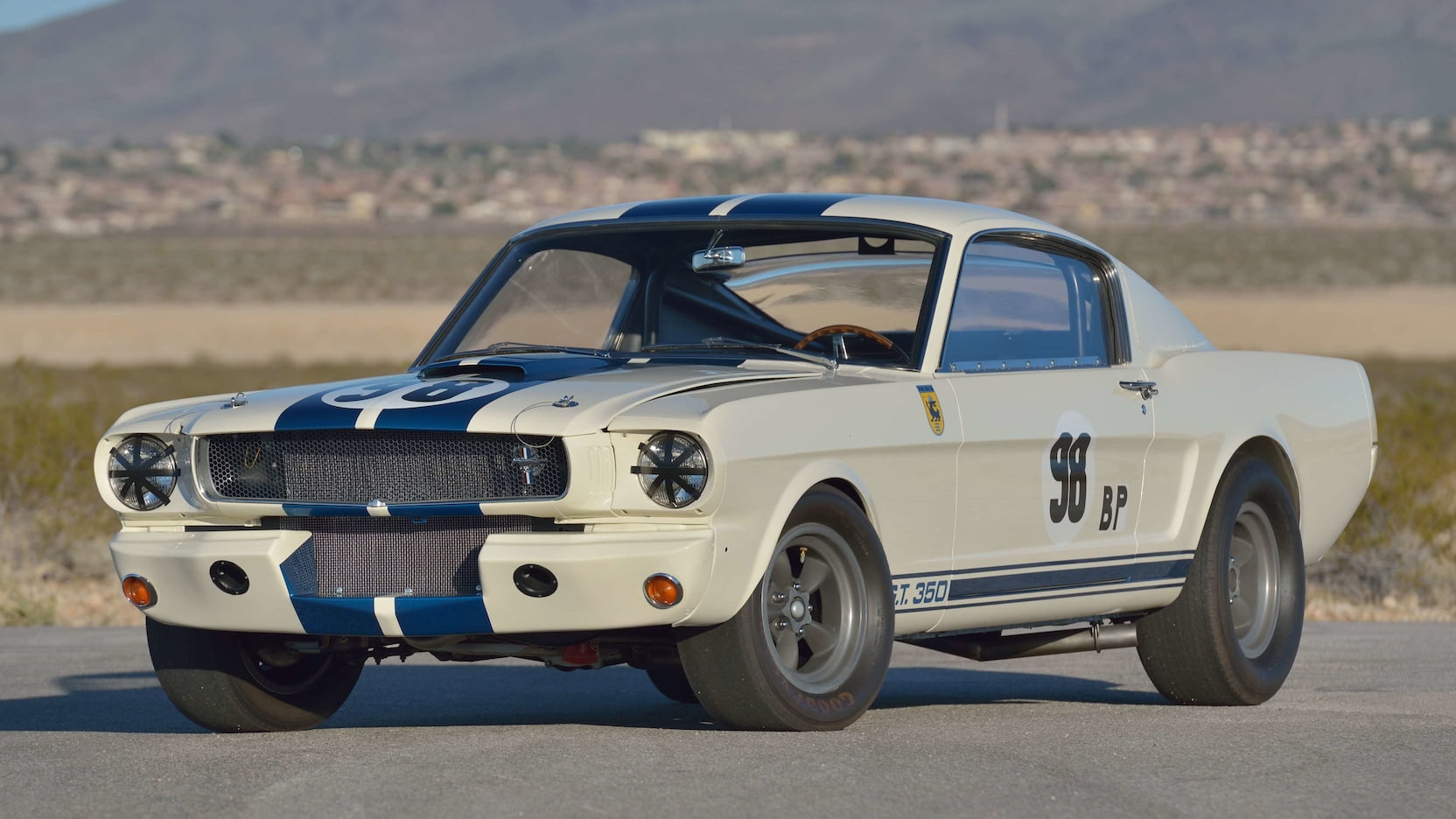The Shelby Mustangs – GT350/GT500
1965-1970
When the Ford Mustang first came on the scene in 1964, peoples’ enthusiasm for the car was mixed with a fair amount of disappointment that the popular pony car did not offer the kind of horsepower and performance found in cars like the Chevy Corvette. While it might have been easy for Ford to be dismissive of such criticism, they instead took it to heart and enlisted the help of one man – Carroll Shelby.
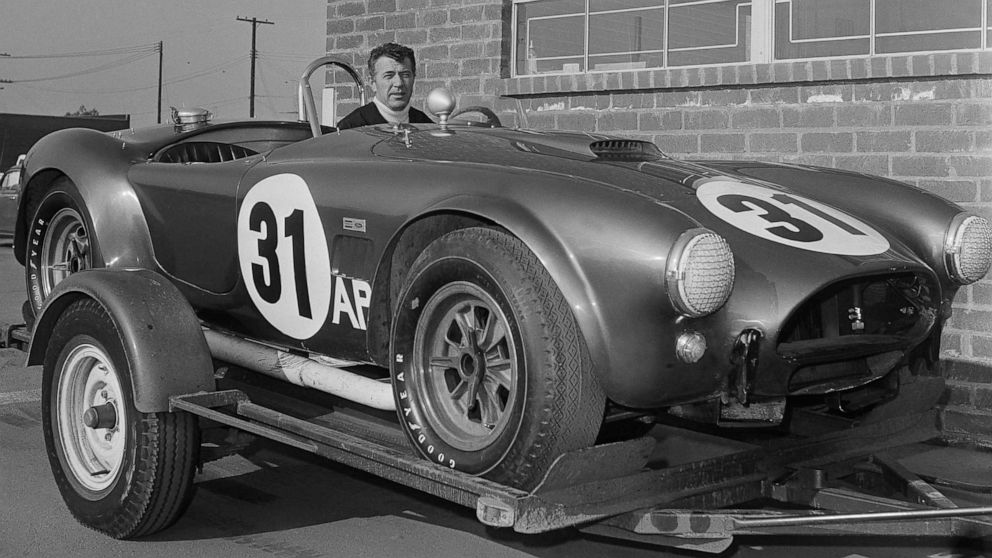
We could stop here and simply say “…and the rest was history.” However, we’d be doing a disservice to the history behind the Shelby-era Mustangs and to the man himself. Afterall, it was Carroll Shelby that helped Ford defeat Ferrari at Le Mans and change the way the entire planet looked at the Ford Motor Company.
Carroll Shelby and Shelby American
To understand the history of the Shelby Mustang, it is important to understand the history between the Ford Motor Company and Carroll Shelby. If you’ve seen the 2019 movie “Ford v Ferrari”, then you’ve got some idea what Carroll Shelby meant to the Ford Racing program and, arguably, to Henry Ford II.
However, while the movie captures some of the more memorable moments of Shelby’s early relationship with Ford, it glazes over the complex relationship that the Texas-born native shared with one of Detroit’s biggest automobile manufacturers.
Carroll Shelby began racing cars in 1952. Driving a borrowed MG TC, he won his first race later that same year. Four years later, Shelby was named Sports Illustrated magazine’s “Sports Car Driver of the Year.” In 1959, Shelby became the second American EVER (Phil Hill was the first) to win the 24 Hours of Le Mans…and not just a class win, but he out-and-out won the whole thing. In 1960, Shelby won the United States Auto Club (USAC) road-racing championship. About the same time, Shelby was forced to announce his retirement from racing because of long-existing heart problems.
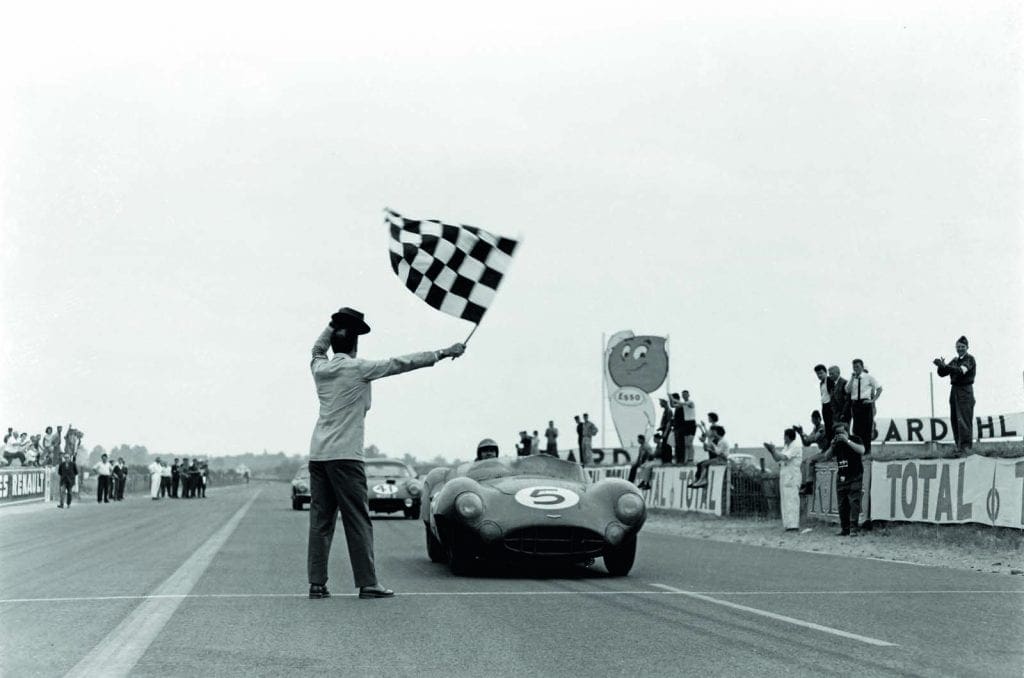
Not to be kept down, Shelby changed direction and went from driving race cars to building them. He built his first Shelby Cobra in February, 1962 at Dean Moon’s speed shop in Santa Fe Springs, California. Less than six months later – in June, 1962 – he opened Shelby American in Venice, California.
Built on an England-sourced AC Ace two-seater body, Carroll Shelby began his relationship with the Ford Motor Company by using their engines as the powerplant for his Cobra. Early models of the Shelby Cobra featured a 260 cubic-inch small block engine, while demands for more power eventually led Shelby to use its 289 cubic-inch bigger brother before making the jump to the 427 cubic-inch FE-series big-block engine.
Carroll Shelby’s Cobra was an (almost) overnight success. The car found traction on the international racing stage. There, the Shelby Cobra dominated the competition, defeating Corvettes and Porsches alike at racing venues around the globe. As his cars rose to victory, so too did the Shelby American company rise in prominence as a serious speed shop that was more than capable of building some serious automobiles.
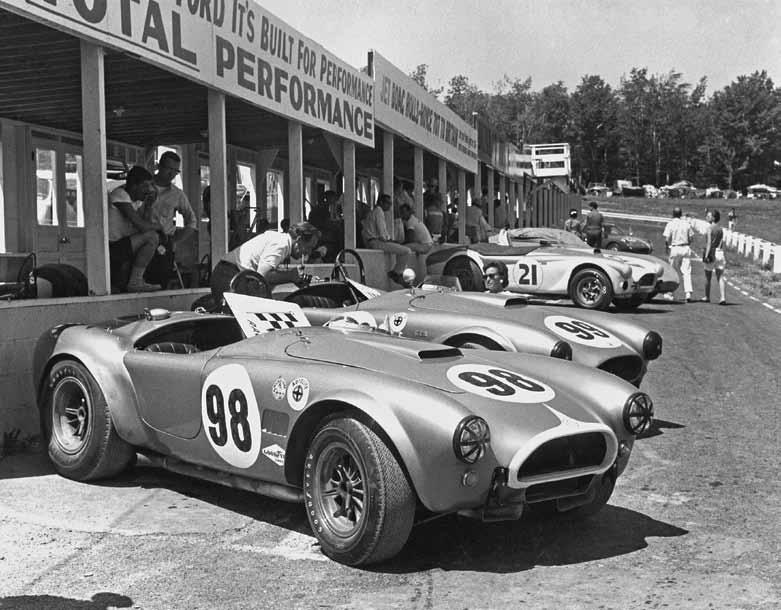
An article from Car Life magazine summarized Carroll Shelby’s rapid rise to fame. “The Texan’s successful midwifery to all sorts of Ford-powered performers since his original Cobra has resulted in elevation to almost division-with-a-division status at Ford, a sort of Bureau of Racing for Dearborn. The company’s projects have risen to such an extent, (the) three-year-old Shelby American firm has had to move into the big hangers at Los Angeles International Airport.”
Whether intentionally strategized by Shelby or else by pure happenstance, it was at this point in his automotive career that Carroll Shelby’s life became inseparably intertwined with that of Lee Iacocca, Henry Ford II, and the Ford Motor Company.
Henry Ford II and Caroll Shelby
Henry Ford II contracted Carroll Shelby and the Shelby American company to re-work his British-built Ford GT-40 race car after early efforts on the track proved that the car did not have what was needed to compete against the likes of Ferrari. Ford Motor Company elected to consolidate the construction of all of their GT-type vehicles to Shelby’s company in 1965. A year later, a team of refined GT-40s, developed by Ken Miles and Carroll Shelby, along with the crew at Shelby American, became the first American-built automobile to win at Le Mans, finishing that race in first, second and third place. The victory was especially sweet for Henry Ford II as his GT-40’s defeated Enzo Ferrari’s racers, settling a rivalry that existed between the two men since Ferrari refused to sell his company to the Ford Motor Company some years earlier.
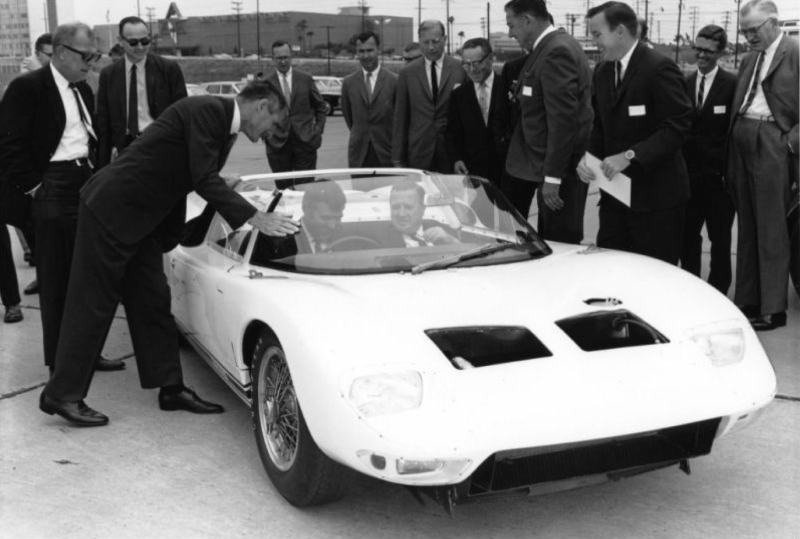
However, as stated above, Ford elected to move ALL of its GT-type vehicle production to Shelby American’s west coast facilities, and so Carroll Shelby suddenly found himself responsible for working with Ford Motor Company to develop the newly-minted Ford Mustang into a high-performance automobile.
Late in 1964, Lee Iacocca approached Carroll Shelby with the assignment of transforming the Mustang into a car that could compete with automobiles like the Chevy Corvette in SCCA race events.
“That was the real idea – to go racing.” Said Shelby in a 1971 Sports Car of the World interview. “I never wanted to build a lot of automobiles to make a lot of money. At the time my intention was to build 100 Mustangs a year because that was what you had to build in order to race.” Shelby’s comments refer to the concept of “homologation”, a process that racing programs adopted early in the 20th century to certify that production-type race cars being entered into competitive racing were representative of their production counterparts.
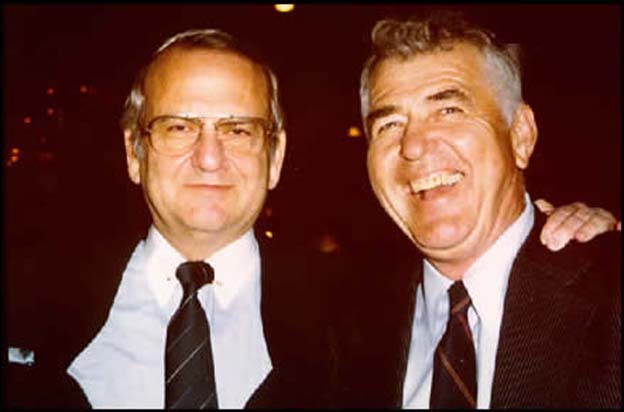
However, Iacocca wanted Shelby to produce far more than 100 units per year. Despite his personal preferences to build true race cars to street-legal hot-rods, Shelby conceded and partnered with Iacocca to develop a GT-production variant of the Ford Mustang that would become known as the Ford Mustang GT350. It was this decision that actually forced Carroll Shelby to move his company from Venice, California to the hangers at LAX airport. More than that, it was the decision that would fortify a generations-long relationship between the names Shelby and Ford – a relationship that continues to exist today.
The 1965 GT350
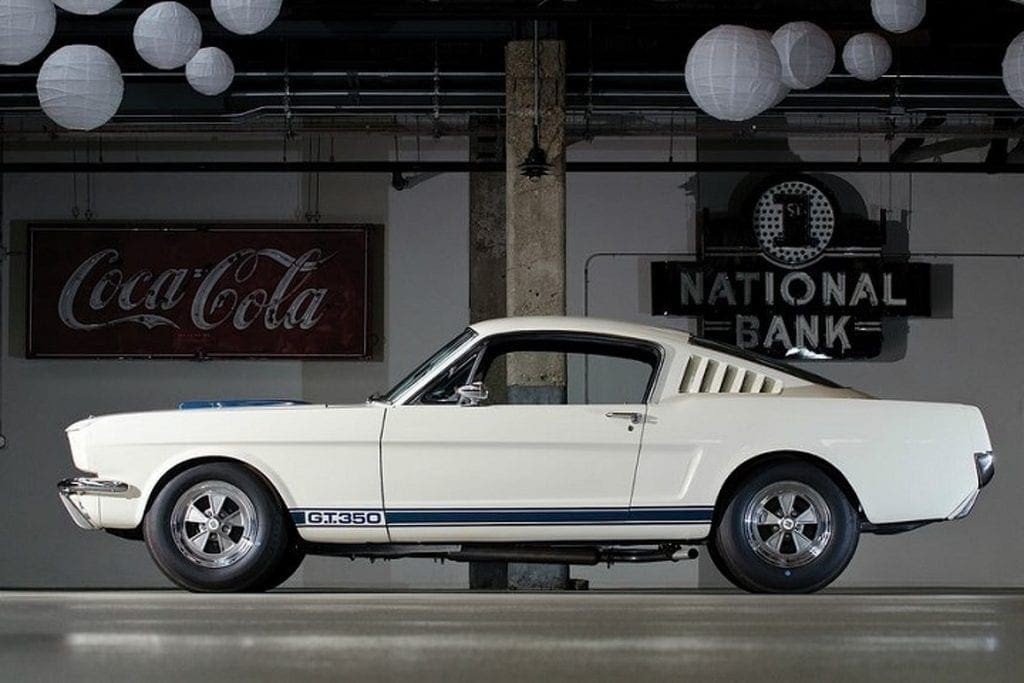
The first of the 1965 GT350s were built when Shelby’s operations were still based in Venice, California. His first iteration of the Ford Mustang was far more at home on a road course racetrack than it was on the open streets of California. In Shelby’s own words, the first GT350s ever built were “a no-compromise car built to get the job done.” Unfortunately for Shelby, the car was too powerful, too aggressive. While it might have been the sort of Mustang that someone comfortable running wide-open on a race track might appreciate, for the uninitiated, the car was more than most recreational drivers could manage.
According to Motor Trend magazine, Carroll Shelby “(took) a 2+2, inject(ed) some Cobra venom, tone(d) up the leg muscles and add(ed) lightness.”
Sure, as simple as that.
For starters, Carroll Shelby developed the GT350 by taking a stock Mustang and began its transformation to a high-performance race machine by deleting 200 pounds out of it. He accomplished this by removing the back seat (amongst other things) and exchanging Ford’s steel hood for a scooped fiberglass assembly. These deletions weren’t so much a stroke of Shelby’s own genius as much as it was his desire to build a car that would meet the requirements of the SCCA.
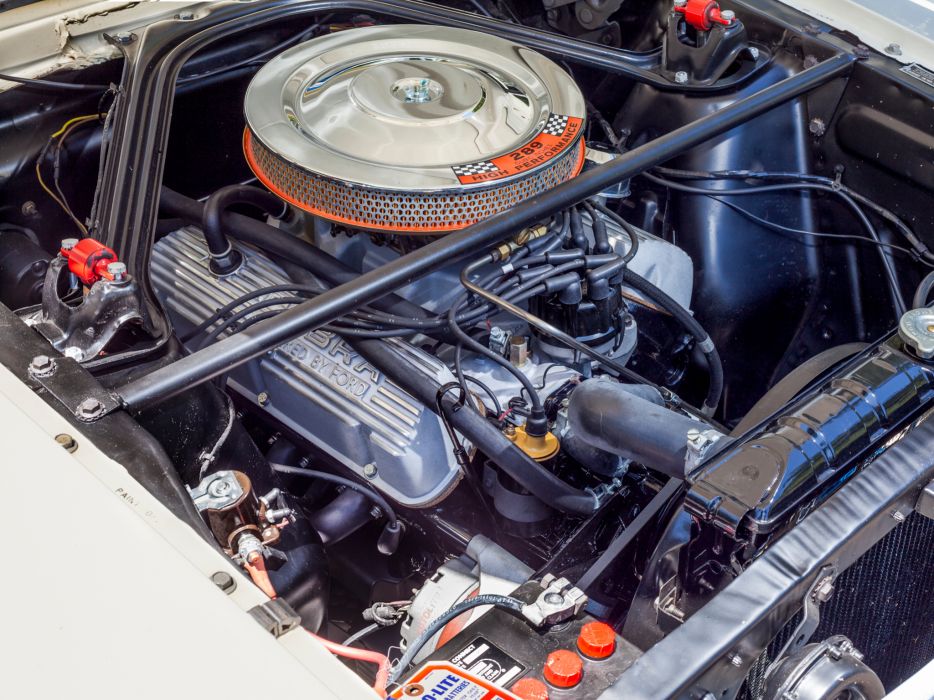
To give the GT350 the extra kick that it needed, Shelby installed a 306 horsepower, 289 cubic inch, high-output V8 engine under the car’s fiberglass hood. Shelby installed a 715-cfm Holley four-barrel carburetor atop the intake manifold and paired the entire engine assembly to a Borg-Warner T-10 close-ratio, four-speed manual transmission. Rounding out the drivetrain was a 9-inch rear end that housed a Detroit Locker differential. Each car featured tri-Y headers, glasspack bullet mufflers, and short, race-car style cutout pipes exiting just ahead of the car’s rear wheels.
With regards to the car’s chassis setup, Shelby installed a 1-inch swaybar up front, override traction bars and suspension-travel-limiting cables in back, and Koni adjustable shocks at all four corners. He also lowered the upper A-arms mounting point by approximately one-inch, which then required the installation of special pitman and idler arms. A one-piece export brace was installed to tie the shock towers together more rigidly than the stock Mustang’s two-piece assembly. This configuration gave the car a far more precise suspension geometry. Lastly, a Monte Carlo brace bar was installed between the two shock towers at the front of the car. This assembly spanned the engine and created a rigid underhood bracing. Though commonly found on many sports cars today, this setup was less common on production vehicles of the era.
All of the 1965 Mustangs that were to be modified by Shelby American into the GT350 package were shipped from Ford’s San Jose assembly line finished in Wimbledon White paint and a black interior. In addition to the modifications listed above, future GT350 owners could order their cars with special 15×6, five-spoke wheels supplied by Crager, and a dual Guardsman blue racing stripe down the center of the car. Each GT350 Mustang was also fitted with blue “GT350” rocker panel stripes.
When fully assembled, each car had a curb weight of 2,800 pounds, which is pretty lite (even by today’s standards). Each car had a base price of $4,311, which was approximately the same price as a base-model Corvette from that same year. However, unlike the Corvette, the $4,311 sticker price got you a fully-optioned car that was quite capable on the road or the racetrack. Still, a two-passenger sports car that cost over four-thousand dollars was a big investment for most consumers in 1965. As a result, just 561 of the original GT350’s were sold that year.
The 1965 GT350R
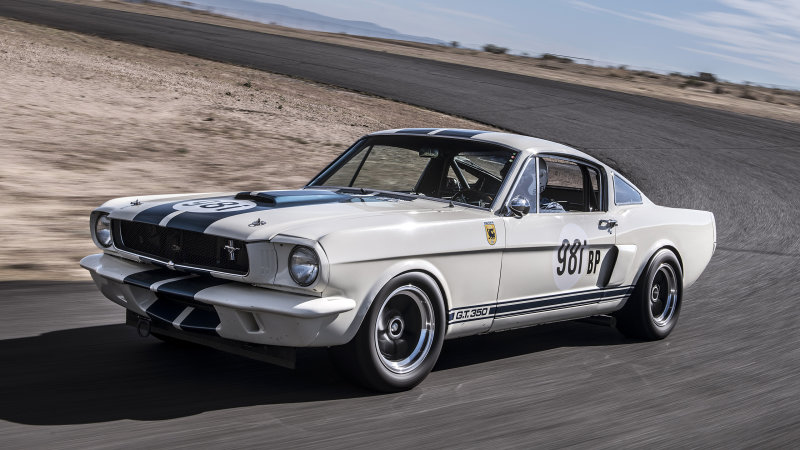
In addition to the 561 GT350 Mustangs that Shelby built for the 1965 model year, he also fabricated 36 completely race-ready GT350R mustangs that year. Unlike the GT350’s, which were shipped to Shelby American at LAX as a fully-assembled Mustang, the “R” models arrived completely stripped down. The cars had no carpeting or upholstery, no headliner, no sound deadening and no insulation. Additionally, the cars lacked their side and rear windows and were missing a fuel tank.
Once received by Shelby American, the cars received a single bucket seat, a four-point roll cage, sheet aluminum inner door panels and fiberglass shelf in place of where the back seat would normally reside. The stock Mustang dash pad and gauges were removed and a six-gauge instrument panel was installed in its place. Fixed Plexiglas side windows mounted in aluminum frames were installed into the driver and passenger doors and a Plexiglas rear window was also installed. In addition to creating a safer environment for the driver in the event of a crash, these Plexiglass components also reduced the GT350R Mustang’s overall weight by another 45 pounds.
The 1965 GT350R featured a special 34-gallon fuel tank which was mounted in the trunk of the car. The tank featured special internal baffles and included a 3-inch filler neck with a special snap-open filler cap on top. The battery and an electric fuel pump were also mounted in the car’s trunk.
The GT350R’s body received a number of modifications as well. These included covering the rear quarter roof vents and fuel filler in back with aluminum panels. All-four wheel openings were also re-worked with larger overall radiuses and a flared fender to allow for a set of wide 15×7 American Racing five-spoke mags which were wrapped in Goodyear racing radials. Both the car’s front and rear bumpers were deleted. The front end of the car instead received a fiberglass apron with a large center opening that was designed to aid in the airflow to both a large, three-core radiator and an external oil cooler.
Mechanically, all GT350R models had their 289 cubic-inch engines broken down, with all assemblies balanced, blueprinted and reassembled to precise specifications. Cylinder heads and manifolds were ported and polished by Valley Head Service. Once completed, the refined 289 cubic-inch engines now produced anywhere from 325 to 360 horsepower.
On Valentine’s Day – February 14, 1965 – driver Ken Miles piloted a GT350R to victory at Green Valley Raceway in Smithfield Texas (just outside Dallas.) The race was memorable because it was the first time the GT350R had ever been entered into competition at an SCCA event. What make’s it even more memorable is that it produced one of the most memorable photographs in the history of motorsports: namely, Ken Miles and the 1965 GT350R airborne (as seen below.)
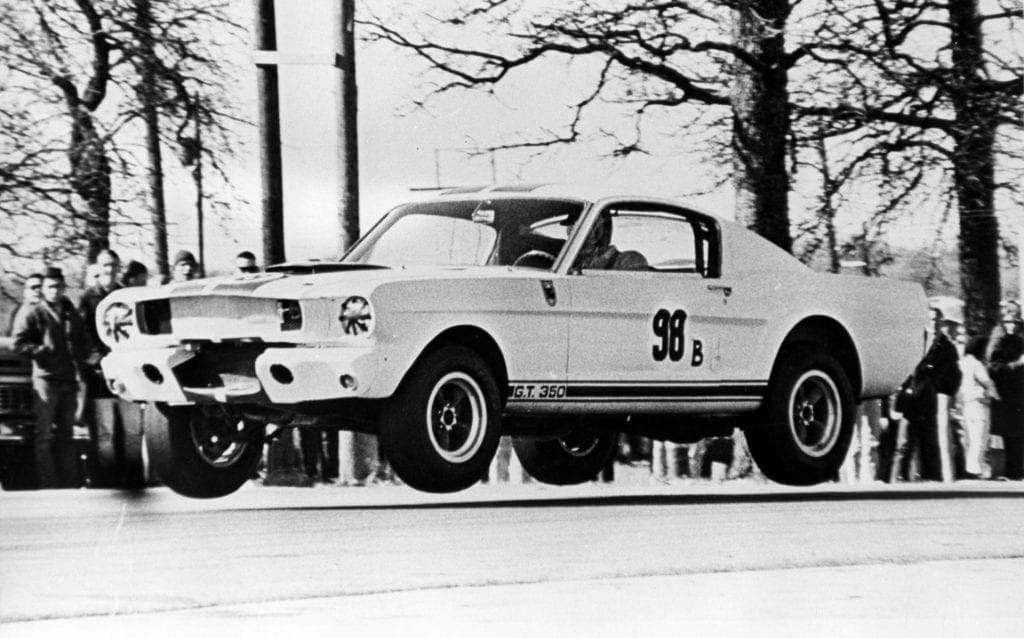
Shelby Mustangs would go on to win the 1965 SCCA B/Production championship that year as well as two more SCCA titles in 1966 and 1967.
You can learn even more about the 1965 Shelby Mustangs by clicking here.
The 1966 GT350
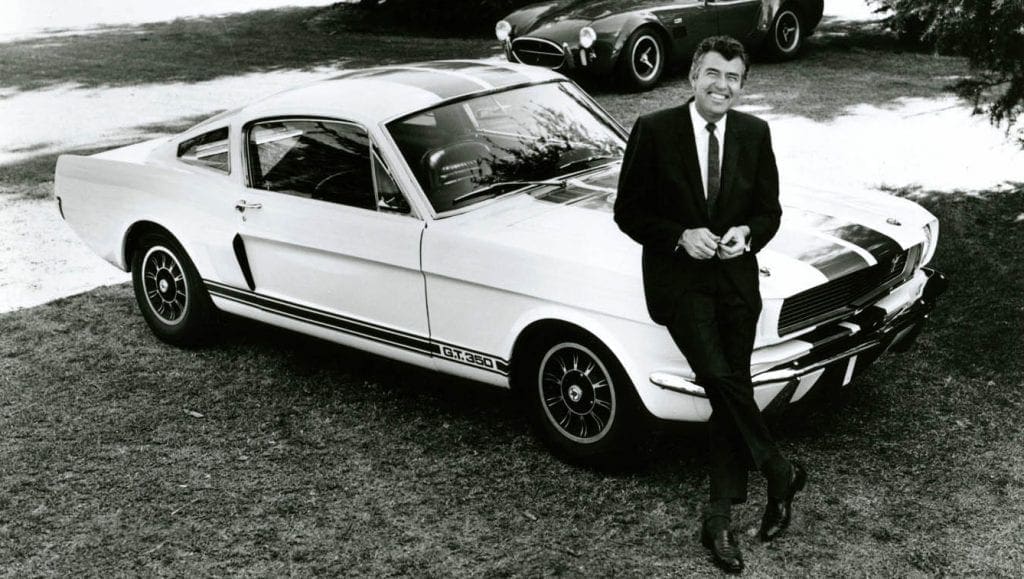
While nobody today would argue that the 1965 Ford Mustang GT350 is one of the greatest American muscle-cars ever built, Ford officials thought the car was “too hot” for its time. They recognized that the car had put the Mustang on the map in terms of racing and capability, but they also felt that giving the car a broader range of amenities and “cooling it down some” would widen consumers’ appeal of their monstrous Mustang.
It was with this mindset that Ford approached Shelby American with the following objective: retain the GT350’s racing image while softening some of its rough edges to make it more accessible to a larger audience.
Recognizing that the “R” edition of the GT-series Mustangs would allow Shelby to continue his endeavors to build cars for the track, he took the directive to heart and began making changes to the GT350 Mustang for the 1966 model year.
For starters, the 1966 GT350 included a backseat. An optional C4 automatic transmission was offered as were more paint choices. Where all 1965 GT350’s came finished in Wimbledon White, the 1966 model could be ordered in four additional colors: red, blue, green, and black. Other exterior changes to the car include the addition of rear quarter glass and functional, cooling side scoops.
Mechanically, the 1966 GT350 was essentially unchanged from the 1965 model with the exception that full tailpipes were to be installed in-place of the short pipes that had been the only exhaust option the previous year.
The 1966 GT350 maintained the same power plant as the 1965 model, but the newer car’s chassis received a number of refinements. The changes that were made here were designed to reduce the harshness of the car’s ride while simultaneously reducing production costs – both of which had had a negative impact on sales numbers the previous year. The modified A-arms out front were discontinued. Instead, the 1966 model used the A-arms installed in the stock Mustang. Also gone was the rear override torque control arms, which were swapped out for simpler traction bars. Lastly, the Koni shocks and Detroit locker differentials – both of which had been standard on the 1965 GT350 – were now optional equipment that could be ordered (at an additional cost.)
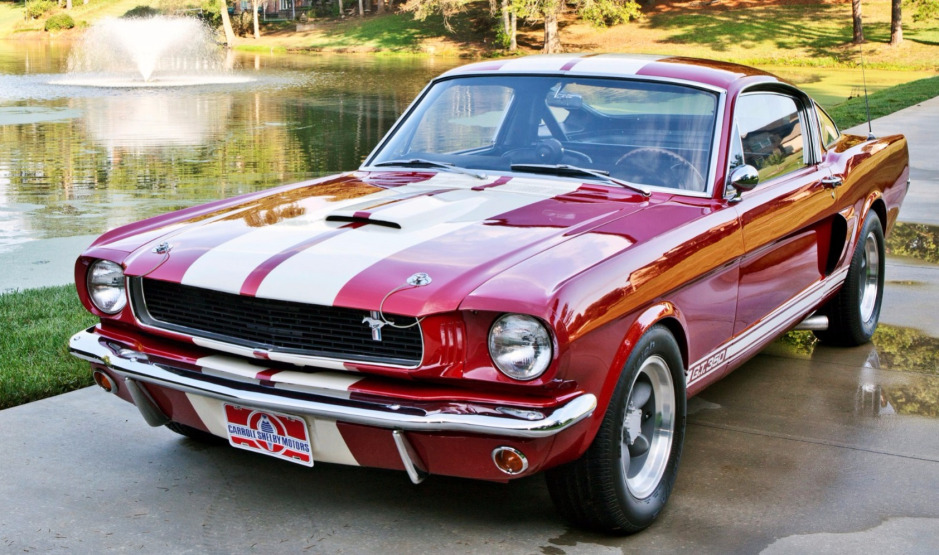
Although the changes listed above were intentionally planned for the 1966 GT350 model, the actual implementation of these changes took place over the course of several months. The first 252 1966 GT350 Mustangs were actually sold as “1965 leftovers,” meaning that they came equipped with many of the previous year’s features. The standard 15-inch rims that had been introduced in 1965 were installed on the first 252 GT350 models in 1966, as were the aforementioned Koni shock assemblies, before becoming a dealer-installed option later in the production year. Later in the year, five-spoke Magnum 500 wheels became standard equipment, though the Crager-supplied wheels could still be purchased as optional equipment.
Additionally, not all 1966 GT350 Mustangs included a backseat. Allegedly, the first 82 GT350’s produced in 1966 arrived at Shelby American as two-seaters, and some of these cars were later fitted with a rear seat as a dealer option.
Ford and Shelby American offered a handful of new options to consumers when ordering a 1966 GT350. Of these, the two most significant options was the introduction of Paxton supercharger that reportedly boosted engine output by 46 percent. Additionally, a GT350 convertible was also introduced for the 1966 model year, although all four built that year were not initially offered to the public. Instead, these very limited examples either remained with Carroll Shelby or were given as gifts to valued friends.
The four 1966 GT350 convertibles were produced from the final four GT350 coupes that rolled off Ford’s assembly line that year. Each of these topless Mustangs was painted a different color. All had underdash air conditioning and all but one were built with automatic transmissions. They also featured non-functional side scoops because the drive assembly for the convertible top occupied the same space as the internal ductwork needed to make the scoops functional.
As expected, the more-conventional 1966 GT350 resulted in larger sales numbers – nearly 2,400 buyers in all – including the Hertz Rent-A-Car company, which purchased 1,002 GT350 Mustangs to put into their fleet of rental vehicles.
The 1966 GT350H
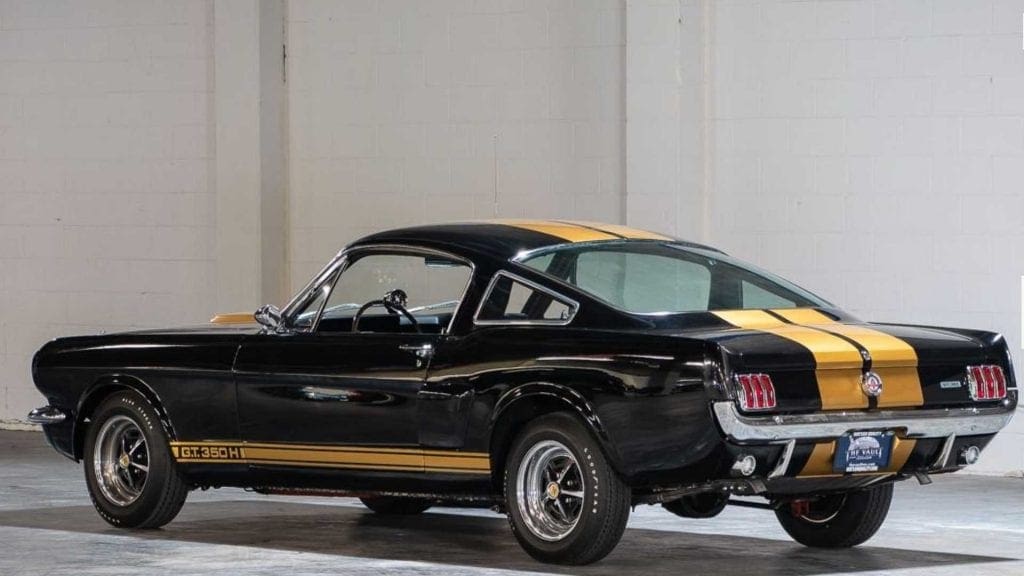
In today’s car rental market, it is almost commonplace to rent a sports- or luxury car for a few days or a long weekend and enjoy the thrills associated with driving a high-performance automobile. However, in 1966, such a concept was virtually unheard of – that is until Shelby American General Manager Peyton Cramer presented the idea to Hertz officials.
The idea was simple: Offer consumers the opportunity to rent one of the finest Mustangs that Detroit had to offer and build stronger, positive brand recognition for both Hertz and Ford. Hertz loved the idea and would go on to order 1,002 of the cars, which included two prototype models – the first of which would be delivered to Hertz for final review/approval on October 26, 1966.
The first prototype started life as a Wimbledon White GT350 that was then repainted black with gold striping. The striping included the letter “H” (for Hertz). A second prototype was created in November, followed by an initial order for 100 GT350H Mustangs.
Nearly 80 percent of the total run of GT350H Mustangs were finished in the gold-on-black design, but many more (as many as 200 units) were finished in typical Mustang colors. A few of the GT350H cars were also built using steel hoods in place of Shelby’s fiberglass hood, and some wore Cragar mags instead of the more familiar Magnum 500 wheels.
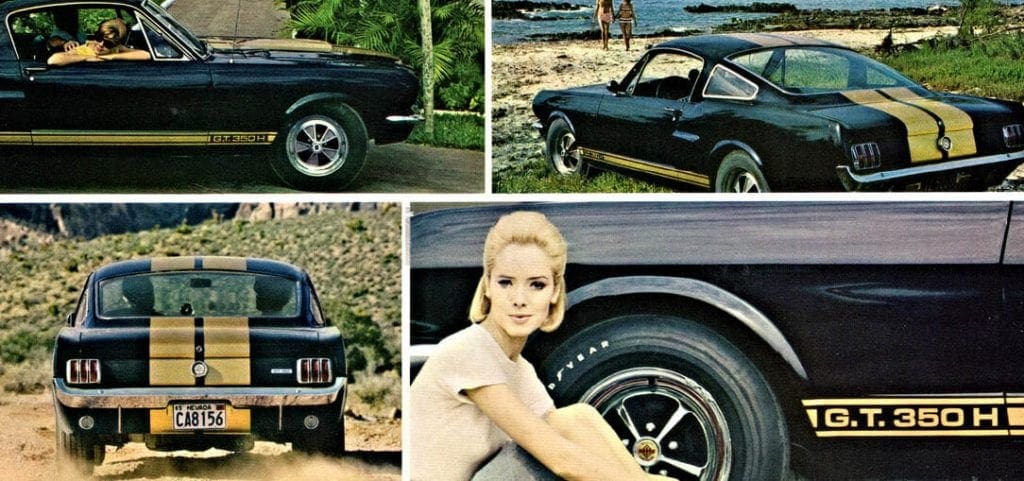
Almost all of the GT350H models were built using the C4 automatic transmission and, like all 1966 GT350 Mustangs equipped with automatic transmissions, these were fitted with a 595-CFM Autolite four-barrel carburetor.
Hertz’s rates for renting a GT350H in 1966-1967 was $17.00 a day of $70.00 a week, plus 17 cents a mile in the New York City area. According to Carroll Shelby, many of the GT350H rentals were wrecked that first winter in New York while others were returned to Hertz offices with a stock 289 cubic-inch V8 engine instead of the hotter high-performance engines that Shelby American had installed in each of the cars. Despite the strong marketing strategy that had encouraged Hertz to enter into this business proposition with Shelby American, Carroll Shelby ended up buying back the entire Hertz collection at a “reduced price.”
You can learn even more about the 1966 Shelby Mustangs by clicking here.
1967 GT350 and GT500

Where the GT350 that had represented a massive leap forward in performance (when compared to a stock Ford Mustang), the arrival of the GT500 in 1967 brought with it an entirely unprecedented level of power and performance when compared to any Mustang – including Carroll Shelby’s GT350 – that had come before it.
Shelby packed a 428 cubic-inch, big-block V8 engine topped by twin Holley four-barrel carburetors under the hood of the GT500. This new engine produced an impressive 355 horsepower (compared to the GT350’s 289-cubic inch V8, which produced a respectable, though far less powerful, 306 horsepower.)
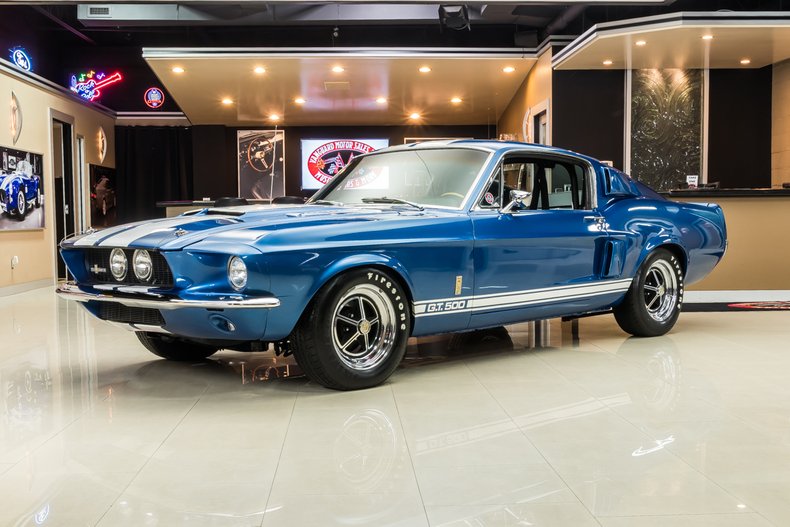
Outwardly, both the GT350 and the GT500 received various body modifications. One of the most appreciable of these was an extended fiberglass nose piece that increased the car’s overall length by nearly three inches (compared to the stock Mustang coupe.) Recessed into the larger nose was a grille which supported twin driving lights. These lights were mounted in different positions, either together in the middle of the assembly or at opposite ends of the grille. Their placement varied greatly depending on which state that particular Mustang was to be delivered.
Elsewhere, the fiberglass valance below the Mustang’s grille incorporated a large cutout that supplied more cooling air to the radiator while the fiberglass hood positioned above the grille featured a large, wide scoop with dual inlets. Functional louvers were installed on each side of the hood scoop when optional air conditioning was ordered by prospective buyers.
Moving towards the rear of the car, Shelby incorporated rear quarter side scoops that were actually functional (not just an aesthetic as it had been up to that point on the stock Mustang.) These scoops served a dual purpose: the upper portion of the scoop assembly extracted air from the cabin of the vehicle, allowing for better air circulation within the cockpit, while the lower portion of the scoop provided air to the rear brakes for better cooling.
Both the 1967 GT350 and GT500 featured a number of fiberglass components in the rear of the car. Shelby used fiberglass to lighten the car and to more-affordably enhance the look of the car. A fiberglass rear decklid was installed featuring a large ducktail spoiler. Fiberglass quarter panel extensions were also installed to form the spoiler’s left-and-right endcaps.
To complete the look of the 1967 Shelby’s rear end, Carroll Shelby elected to install Mercury Cougar sequential taillights as well as a pop-open gas cap and a valance with cutouts for chrome exhaust tips. To say this new Mustang looked aggressive was an understatement – this car looked downright mean.
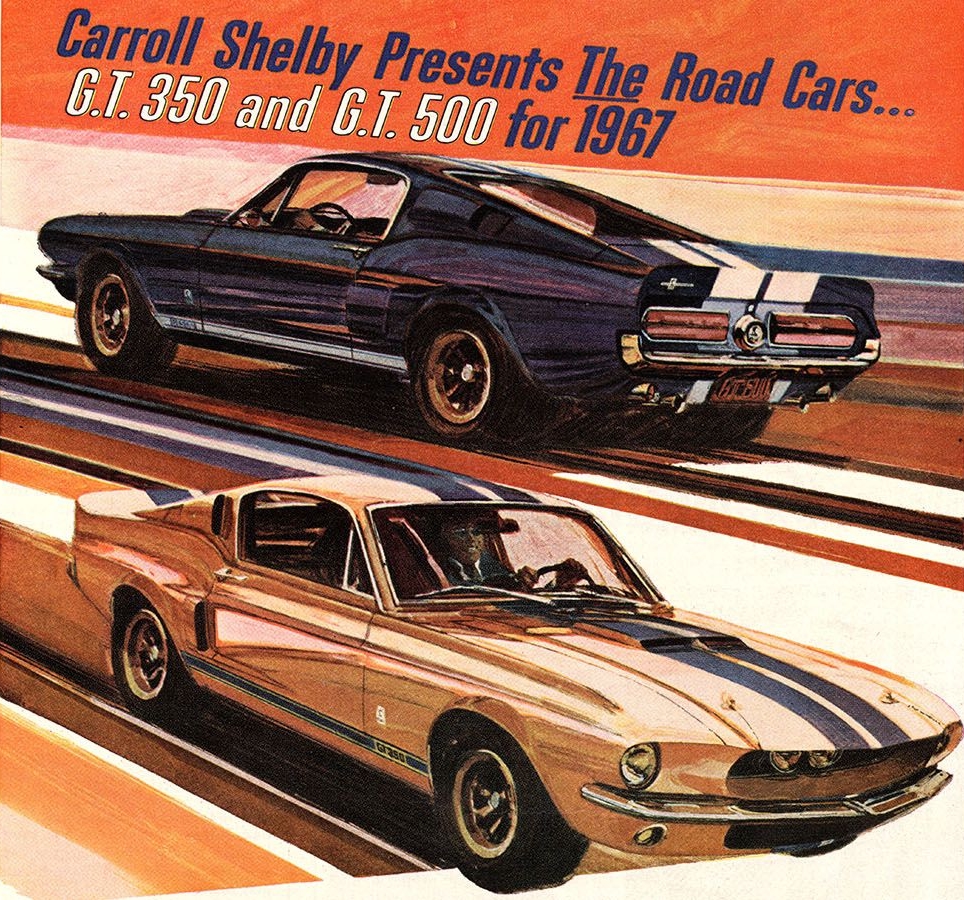
Upon its introduction in 1967, the GT500 outsold the GT350 by a good amount, securing the big-block variant of the Shelby Mustang as a long-term stablemate to its small-block counterpart.
Car and Driver gave the GT500 high marks in handling and steering. The car’s acceleration also received high praise. Per the article, “the GT500 accelerates powerfully at any legal speed, gets off the mark with little wheelspin despite the absence of a limited-slip, and shifts very crisply”.
Interestingly, Shelby set to work on two GT500 prototypes – a notchback coupe and a ragtop convertible. However, even while the GT350 and GT500 Mustangs were continuing to gain traction with Mustang owners and enthusiasts everywhere, Carroll Shelby was growing weary of his arrangement with Ford by 1967. Shelby American’s lease at LAX airport was up and Ford executives used this opportunity to move production of the GT350/500 “home” to Livonia, Michigan. As such, Shelby’s 1967 prototypes never saw the light of day.
The 1967 Super Snake
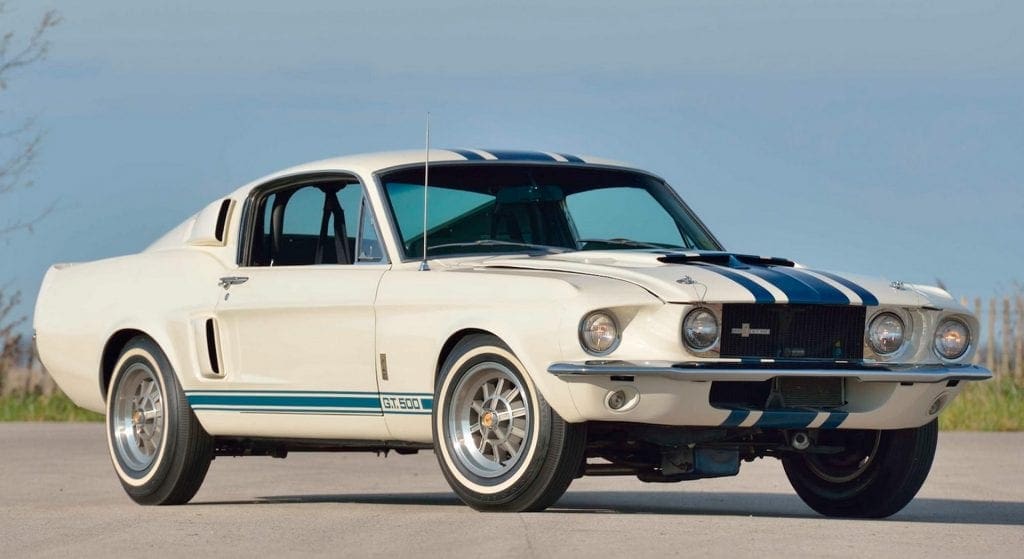
Even as Ford prepared to move production of the GT350/500 east, Shelby American did elect to build a single race-edition variant of their GT500 Mustang. The car, which they dubbed the “Super Snake,” was an experimental GT500 powered by Ford’s FE-series 427 cubic-inch big-block engine. The engine, which had powered race cars both on the NASCAR circuit and at the 24 Hours of Le Mans, produced a massive 520 horsepower!
The backstory behind the creation of the fabled 1967 Super Snake is actually quite interesting. The car owes its existence to Don McCain, Shelby American’s West Coast sales manager. McCain was responsible for promoting performance car sales at Mel Burns Ford in Long Beach, California. He had developed a program in 1965 between Shelby American and the aforementioned Ford dealership wherein he would sell a track-ready variant of Shelby’s GT350’s as a factory-prepped drag car for the (then) hefty sum of $5,041.00. The program took hold and became a successful sales endeavor between Shelby and the local Ford dealer, especially when one of those same cars established an American Hot Road Association (AHRA) quarter-mile standard of 12.40 seconds at 113 miles-per-hour.
Fast forward to 1967.
McCain, looking for another opportunity to sell big horsepower for big dollars, approached Carroll Shelby with the idea of pairing the new GT500 with the proven 427 cubic inch V8 engine. Recognizing McCain’s earlier sales success, Shelby nodded his consent, and McCain (and Shelby American) set about creating the car that would become known as the Super Snake.
A white 1967 GT500 – serial number 544 – was selected for the transformation. This prototype Mustang was adorned with unique and distinctive racing stripes – three stripes versus the standard two. It also received a larger grill for improved engine cooling.
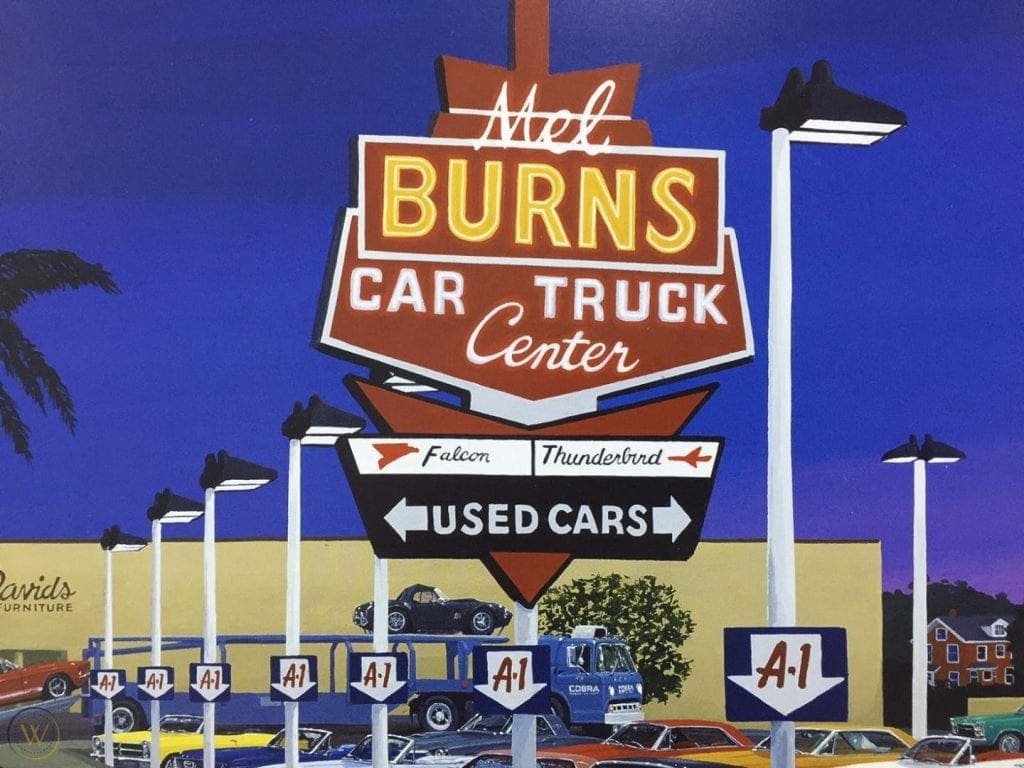
Of course, the exterior of the Super Snake was just window dressing for what the car kept concealed within. The aforementioned 427 cubic-inch engine was a medium-riser big-block engine that had been specially fabricated for the Super Snake program.
The engine featured heads, pistons, a single-carb intake, a front cover, and a water pump that were all fabricated out of weight-saving aluminum. The valvetrain gear included a special 7,000rpm kit featuring exceptionally light valves, a heftier crankshaft, and indestructible connecting rods. Even the oil pan was fortified and offered increased oil capacity.
On the dyno, the 1967 Super Snake produced a monstrous 520 horsepower. On the open road, that number translated to a lesser figure – closer to 360 horsepower – which was still monstrous for its time.
Interestingly, most of the other components used in the creation of the Super Snake came either directly from Ford (as part of the donor car) or from Shelby’s parts bins. The only other non-stock item that was incorporated into the 1967 Super Snake was a set of special Goodyear Thunderbolt tires.
The story goes that Carroll Shelby took the Super Snake Mustang to Goodyear’s test track in San Angelo, Texas so that he could personally test out the new tires. The car was shipped via aircraft to the testing center and arrived before Shelby did, allowing much of the press on-hand, including members of CBS news and reporters from Life Magazine, to get a good look at the car in his absence. Shelby arrived several hours later and immediately proceeded to put the Super Snake through its paces. Additionally, he took members of the press out in the car, pushing the car repeatedly to its limit on the five-mile-long track. Reports from that day indicate that the car achieved speeds approaching 170 miles per hour.
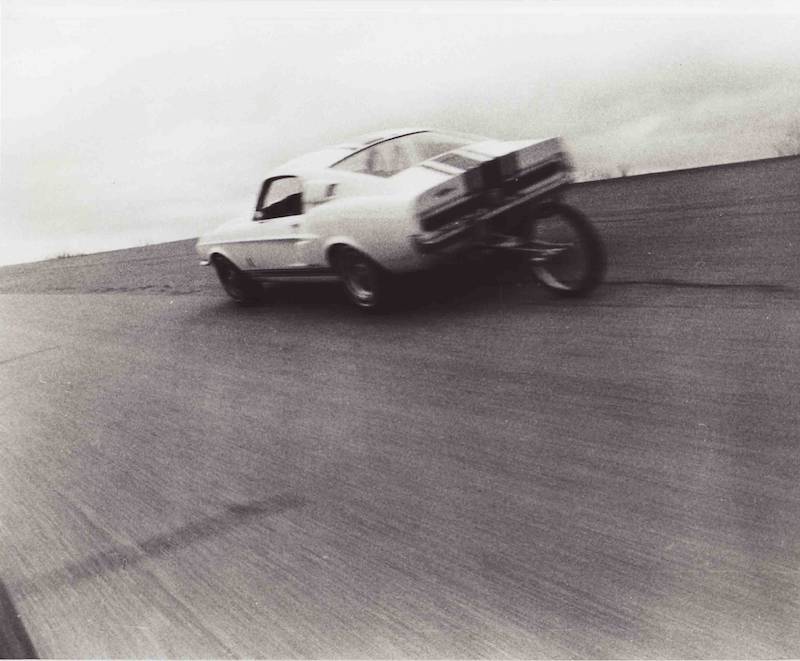
Shelby, who had come to San Angelo to test his Super Snake, and not to entertain the press, left the testing session after satisfactorily putting his new Mustang thru its paces. Then Shelby American Chief Engineer Fred Goodell once commented about Shelby’s involvement in that testing event, stating that Carroll Shelby handed him his helmet and said “Freddy, I’ve got to go to Washington. You’ll have to finish this. Just wear my helmet, and nobody will know the difference.”
In the course of the testing, Goodell completed testing of the Super Snake, averaging 142 miles per hour for 500 miles.
Unfortunately, even the impressive stories that emerged via the press from that day of testing in San Angelo did little to sway the buying public. McCain’s vision for the Super Snake had him selling 50 of the powerhouse automobiles at Mel Burns Ford. He struggled to sell even one. That same prototype that had dazzled the press sat unsold on the Mel Burns Ford lot for nearly a year before being purchased by a pair of airline pilots in 1968.
Rumor has it that Carroll Shelby built as many as ten 427ci GT500 Mustangs in 1967. Unfortunately, Shelby American did little to document the creation of these vehicles. In the years that followed their alleged creation, Fred Goodell confirmed their existence. Rick Kopec, co-found and director of the Shelby American Automobile Club, was able to document two of these cars after spending extensive time going thru all of Shelby American’s 1967 invoices.
You can learn even more about the 1967 Shelby Mustangs by clicking here.
1968 GT350, GT 500 and GT500KR
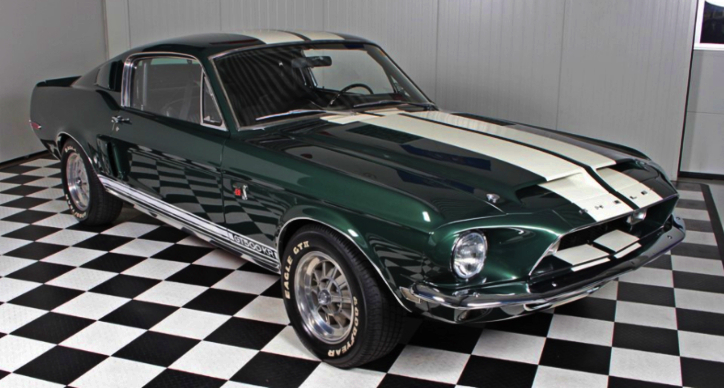
By 1968, production of all variants of the Mustang had moved to the A.O. Smith Company in Livonia, Michigan, including the GT350 and GT500 models previously built by Shelby American in California. With Ford now taking greater control of production, it was important to distinguish brand recognition with its customers, and so it was that the Michigan-built cars became known as the Shelby Cobra GT350/GT500 (note the clever marketing tactics used by Ford by introducing the Cobra moniker to the Mustang line….Shelby built his reputation as an automotive manufacturer by building the Shelby Cobra from 1961 to 1964). Perhaps anxious to cash in on the newly minted branding while also broadening the customer base, Ford also made the decision in 1968 to introduce a convertible version of their high-performance Mustangs for public consumption.
Despite the fact that the entire manufacturing process had been relocated across the U.S., very few changes were made to the cars. The most notable changes were the introduction of the larger Ford Thunderbird taillights and the installation of side-marker lights just behind the front bumper. The standard simulated-mag wheel covers were also redesigned.
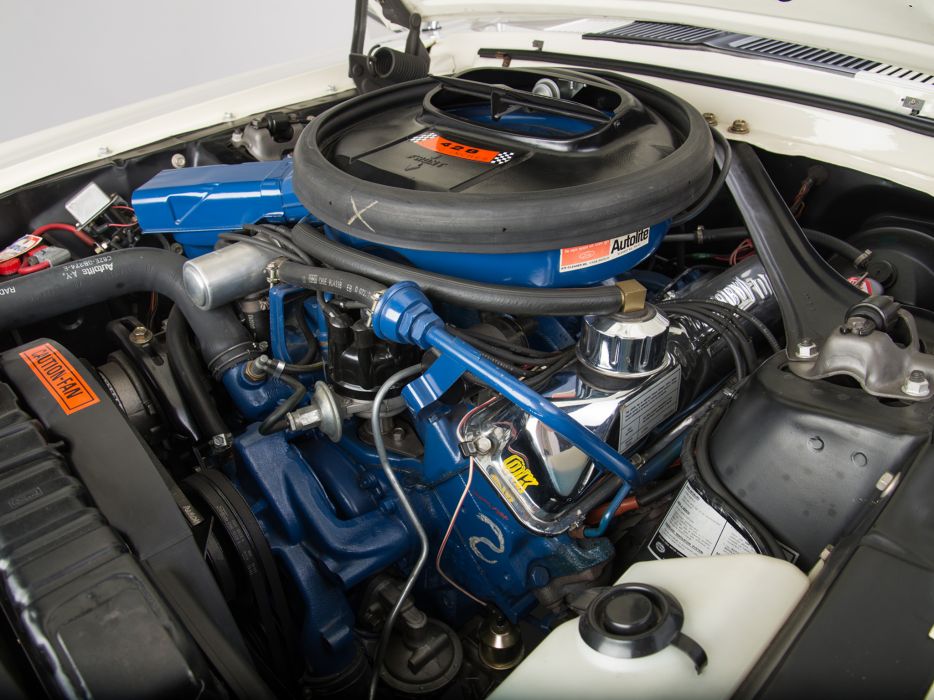
That’s not to say that all of the changes introduced with the 1968 Shelby Cobra were superficial. Ford introduced a significant upgrade to the GT500 in the middle of the 1968 model year production run. Ford’s brand new 428 Cobra Jet V-8 engine became the primary powerplant of the GT500. The engine boasted a respectable 335 horsepower, but this number was only true on the paper it was printed on. In reality, the 428 Cobra Jet was a beastly engine. The National Hot Road Association (NHRA) certified the engine at 390 horsepower, and most experts, including auto-journalist Roger Huntington, claimed that the engine’s actual output was at/around 410 horsepower.
These Shelby Cobra GT500 Mustangs, now equipped with 428 Cobra Jet engine, were given an added distinction. The GT500KR (with the “KR” standing for “King of the Road,”) were definitely the flagship model of the Mustang line-up. The car, which boasted a 0 to 60 time of just 6.5 seconds and a quarter-mile time of 14.58 seconds at 97.71 mph, definitely lived up to its name. What’s more, the new GT500KR sold for just a few hundred dollars more than the GT350 model, despite being vastly more powerful and responsive than its less-powerful little brother.
You can learn even more about the 1968 Shelby Mustangs by clicking here.
1969 GT350 and GT500
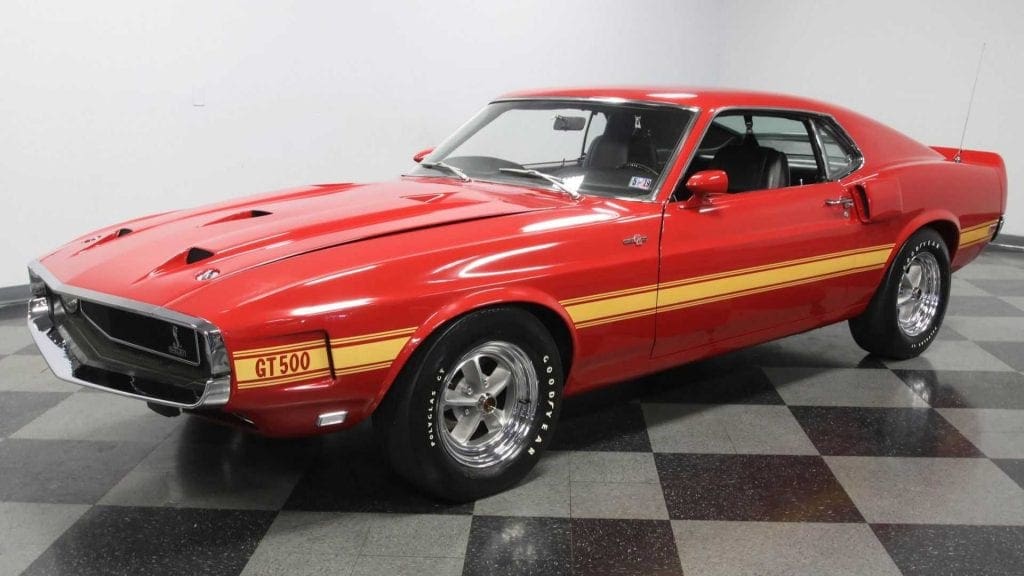
Successful though the branding may have been, the KR suffix was dropped for the 1969 model year. Instead, Ford elected to re-brand all of the GT500 models as “Cobra Jets.” Like the previous year, the 1969 Cobra Jets received the same 428 Cobra Jet engine claiming the same 335 horsepower rating.
The GT350 models maintained their earlier branding and were fitting with a new, standard 351 cubic-inch small-block V8 engine. Rated at a respectable 290 horsepower, this more conservative powerplant was still a step backward from the more aggressive 289 cubic-inch, 306 horsepower V8 that had been used in earlier iterations of the Shelby Mustang GT350 model.
Ford’s engineers, who were constantly looking for ways to advance the design of the Mustang, introduced a restyled fiberglass nose to both iterations of the car for the 1969 model year. This new nose featured a series of NACA (National Advisory Committee for Aeronautics) ducts: two were installed upfront to supply cooling air into the engine compartment, two were installed in the back to let hot air escape, and one was installed in the middle of the nose to introduce air into the engine’s Ram-Air equipment.
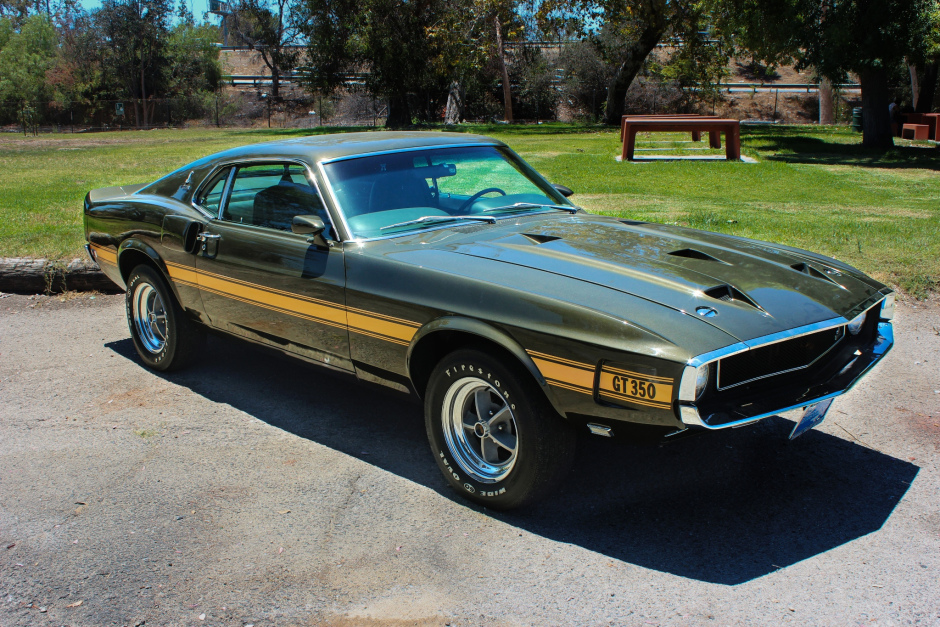
Fiberglass fenders were also introduced for the 1969 model year that featured brake-cooling ducts ahead of the car’s front wheels, while the rear fenders included a second set of scoops for cooling of the rear braking system.
The rear styling of the car was largely a carry-over from 1968, though revised aluminum exhaust outlets were now located side-by-side in the center of the valance panel. A five-spoke wheel was introduced as the standard wheel on the 1969 models, but thanks in part to factory material defects with the standard rims, many of the Shelby Cobras were fitted with Magnum 500 rims.
Interestingly, the 1969 Shelby Cobra (GT500) outsold the GT350 by nearly 2 to 1 in 1969. Apparently, America’s growing “need for speed” enticed prospective buyers to “go big or go home.” This proved true in both the coupe and convertible models, which ultimately encouraged Ford to continue promoting the Shelby brand, even though Carroll Shelby himself had largely been eliminated from the process of developing these latest iterations of the GT cars, due in large part to a spat between himself and Ford which motivated Shelby to sever ties with the automaker.
Despite strong branding, interest in the Shelby-edition Mustangs began to show a decline in 1969, and it was a decline that would carry over into the 1970 production year.
You can learn even more about the 1969 Shelby Mustangs by clicking here.
1970 GT350 and GT500
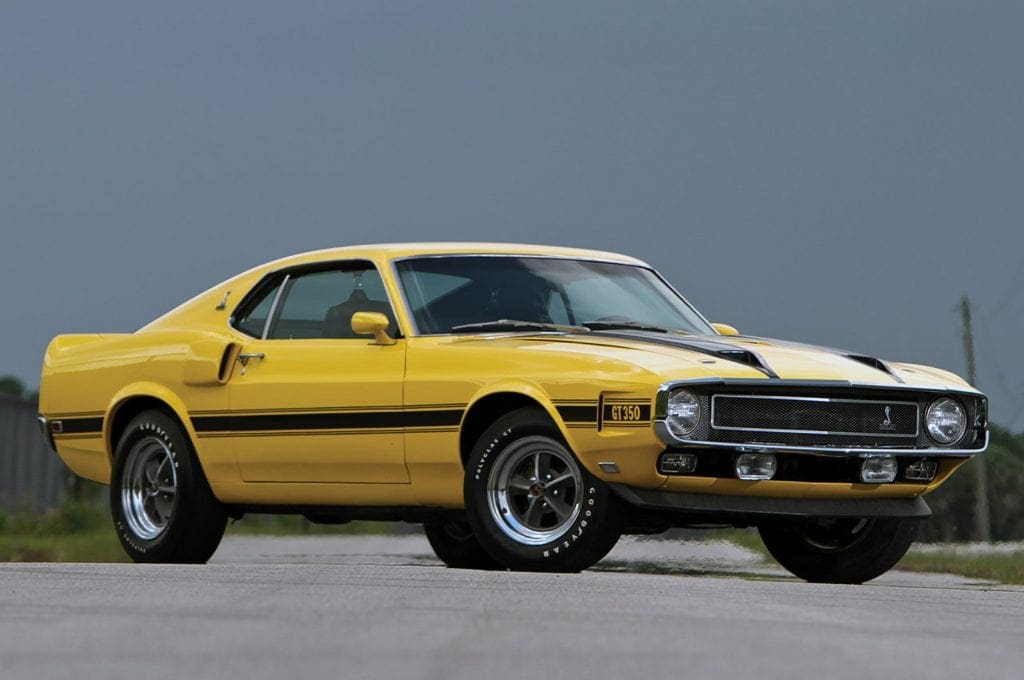
“The original Shelby GT350 was a firebreather, it would accelerate, brake and corner with a nimbleness only a Corvette could match. The GT350, 1969-style, is little more than a tough-looking Mustang Grande – a Thunderbird for Hell’s Angels. Certainly not the car of Carroll Shelby’s dreams.” -Brock Yates, Car & Driver Magazine
Just because a product carries a specific label or branding does not make that product true to the branding it carries. Carroll Shelby recognized this in the Mustangs that Ford was now producing in earnest at their Detroit manufacturing facilities. Like the Cobras that he’d built before Ford, and along with the GT40 that he had built in cooperation with Ford, the GT350 and GT500 Mustangs had been built based on the visionary brilliance of Carroll Shelby himself. Unfortunately, Ford’s greed, or perhaps its insistence on softening the edges of Shelby’s vision to appeal to a broader audience, was actually the largest contributing factor to the demise of the Shelby Mustang series.
In the fall of 1969, Carroll Shelby contacted Ford’s Vice President John Naughton and asked him to discontinue the production of the GT350 and GT500 models. Naughton reluctantly complied, but with the understanding that Ford would honor all orders that had already been placed for either of the GT-edition Mustangs.
Approximately 3,200 Shelby Mustangs were built in 1969, and nearly 790 of these units were still around – unsold – as the model year ended. The lack of sales put Ford in a bit of a predicament. Ford recognized that the 1969 cars would be sold at a loss since they were no longer current-model-year vehicles.
Instead, Ford elected to sell each of these Mustangs as 1970 models. While this might sound easily accomplished, the actual process of updating these cars was a bit more involved than one might think. To start, each of the VIN numbers had to be re-assigned. Under the careful scrutiny of the FBI, Ford was allowed to remove the VIN plates from below the windshield and from the driver’s door. Interestingly, because the VIN tags on the fenders were not visible unless the fenders were removed from the car, they were allowed to remain.
Now that these remaining Mustangs were given new serial numbers for the 1970 model year, they were re-packaged with chin spoilers and black hood stripes in an effort to differentiate them from the 1969 models. A few changes were also made to the GT500’s emission system to make it compliant with 1970 emission standards. In truth, however, all 1970 Mustang GT350 and GT500 models were really just un-sold carryovers from the previous model year and nothing more.
While it can reasonably be argued that the Shelby Mustangs ended as a direct result of Shelby’s failed relationship with Ford, the truth is actually a bit more complicated. Yes, Shelby’s departure had a direct impact on the future of the brand, but skyrocketing insurance rates and stricter emission regulations were also taking their toll on the production of big-block, high-horsepower automobiles. Where automobiles like the Corvette, the Pontiac Trans-Am and the Dodge Challenger attempted to weather the storm, Ford knew that the era of big horsepower was drawing to an end…at least for now.
This piece is respectfully dedicated to Joe K., Mike R., and Chris T – My Mustang Brethren!


